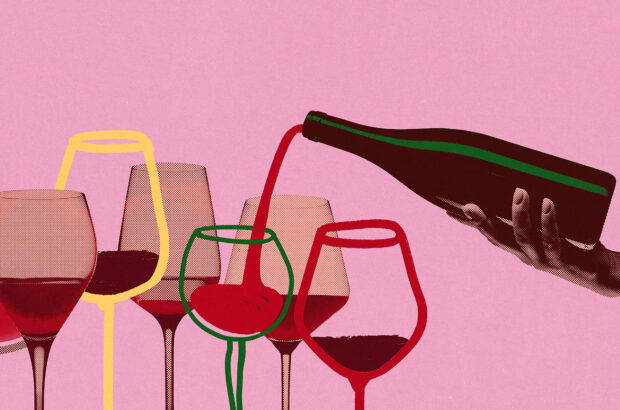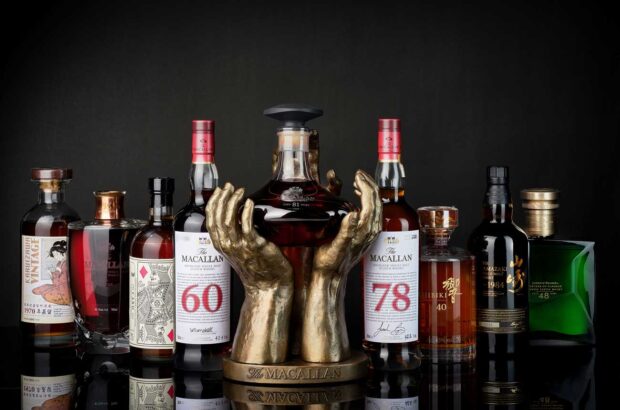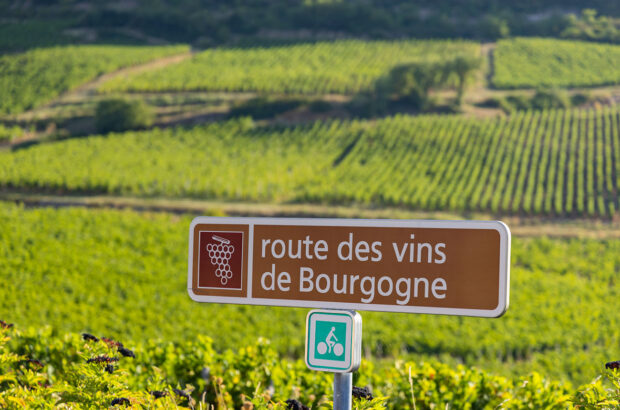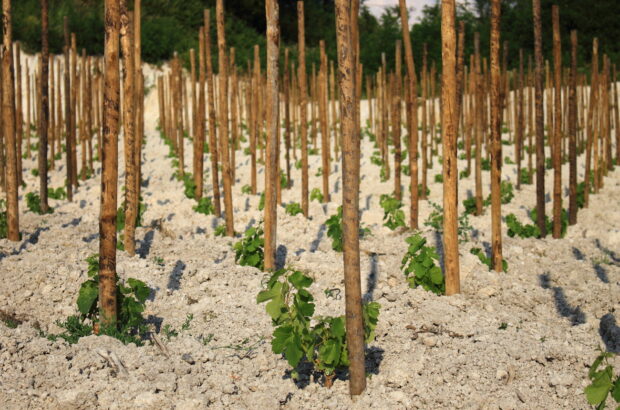If Sake is an acquired taste, then the world is divided into two kinds of people: those who have acquired the taste and those yet to acquire it.
Once bitten by the bug, you’ll never look back as a world of unalloyed drinking pleasure opens up before you.
Part of the process is getting to grips with how it is made and its various different grades, but while a little learning can prise the gates to Sake heaven ajar, only the taste will fling them open and convert you to the delights of Japan’s national drink.
Scroll down for our Sake recommendations

Sake Dewazakura Oka
The basics
Sake just means alcohol (酒) in Japan, whereas the rice-based drink that we know as Sake is in fact called ‘Nihonshu 日本酒’, Japanese alcohol made from rice. Derived from ancient China, rice-based alcohol beverages have been made in Japan for over 1,000 years.
Keep expanding your wine expertise with our Decanter Premium subscription
Many (some say 100) varieties of rice can be used for Sake production. The most widely used Sake rice include Yamadanishiki 山田錦, Gohyakumangoku 五百万石 and Miyamanishiki 美山錦. These are deemed most suitable for making Sake due to the large percentage of the ‘white heart 心白’ – or the starch in the core.
Sake generally weighs in at around 15–20% abv, depending on the style and production method. It has just a fifth of the acidity of wine. What it lacks in wine’s crisp, refreshing acid bite, however, it more than makes up for in texture, subtlety of flavour and diversity of style.
Polishing
Quality grades are determined by the polishing ratio, or ‘Semai Buai 精米歩合’. This ratio indicates how much of the rice grain is milled away, removing the protein and fat on the translucent exterior, before the starchy core is revealed and ready to be converted by the koji mould to fermentable sugar.
Generally speaking, Sake gets more expensive when more rice is milled away (at a lower polishing ratio) and tends to showcase a more delicate, fruity aroma profile. However, it’s worth noting that the milling ratio isn’t necessarily an indicator of quality. The savoury, punchy rice flavours from protein and fat, which are considered an impurity, may well be the desired style for some producers.
Fermentation
Perhaps the most significant contribution to the style and flavour comes from the aims and techniques of the ‘Toji 杜氏’, the master brewer.
For the most common production method, the rice is first washed, steamed and cooled. A small proportion of the rice is then spread out on wooden tables, where the starch is broken down into fermentable sugar by the addition of koji mould spores. Subsequently, more steamed rice, yeast, and beneficial bacteria are added, allowing the simultaneous transformation of starch to sugar and sugar to alcohol.
By the end of fermentation, the brewer has the option to add alcohol to refine the flavour profiles or keep the Sake ‘Junmai (purely rice or 純米)’.
Decisions at the bottling stage, such as whether to pasteurise, when to do so, and how many times, can also shape the flavour and the longevity of the final product.
Sake styles to know
Daiginjo 大吟醸 – Super premium Sake with a 50% polishing ratio. Usually showcasing elegant fruity, floral perfume with great purity and finesse. If there is no indication of ‘Junmai’ on the label, it means the Sake is polished by a splash of distilled alcohol.
Ginjo 吟醸 – Premium fragrant Sake with a 60% polishing ratio, can have a slight hint of savoury complexity. Also contains additional alcohol if no mention of Junmai on the label.
Honjozo 本醸造 – The entrance to the premium category – made using rice polished to 70% and up to 10% alcohol – tends to yield an easy-drinking, ‘ricey’ and less aromatic Sake.
Junmai 純米 – Literally, it means ‘purely rice’. It refers to Sake made with nothing other than rice, water, yeast and Koji fungus. Junmai Sakes, compared to styles made with added alcohol, tend to exhibit a richer mouthfeel and more savoury and complex flavours. The term, on its own, doesn’t indicate a milling ratio. When appended to Daiginjo and Ginjo, it suggests that the premium Sake hasn’t been fortified with alcohol.
Futsushu 普通酒 – ‘Basic alcohol’. The basic table Sake that is widely available. There are no limits to the milling ratio, the use of rice varieties, or the choice of additives (including alcohol and sugar). Quality Sakes with a wide range of flavours and styles can be found in this category, and they usually offer great value.
Broadly speaking, Daiginjo and Ginjo, with their beguiling fruity and floral fragrances, tend to be popular as chilled drinks while Honjozo and generic Junmai Sakes can often offer a broader range of flavour and versatility, especially when drunk with food, and can be served at a wider range of temperatures.
Our top Sake picks
Value tries under £20
Takara Shuzo, Sho Chiku Bai Shirakabegura, MIO Sparkling Sake
Tasted by: Sylvia Wu

A cheerful, crisp sparkling Sake with a polishing ratio of 69%. Blossom, melon, freshly squeezed pear juice and steamed rice perfume. Zesty citrus on the sweet and fruity palate, accompanied by notes of banana peel and egg tart. With an alcohol content of just 5%, it’s easily enjoyable. Chilling is a must.
£5.60 for 150ml and £9.90 for 300ml at Yutaka
Akashi-Tai, Junmai Sparkling Sake
Tasted by: Sylvia Wu

The Junmai sparkling Sake from Akashi-Tai was naturally fermented in the bottle to create fizz. It features aromas of freshly steamed sticky rice and jasmine blossom on the nose, followed by a crisp palate of citrus and ripe pear, with lovely acidity to balance. With alcohol content at a mere 7%, it’s easy to drink and cleansing, making it great for pairing with raw fish.
£14.95 for 300ml at Master of Malt
Shimizu Seizaburo Shoten, ZAKU Junmai ‘Ho no Tomo’
Tasted by: Sylvia Wu

The producer was founded in 1869 in Suzuka, Mie Prefecture, a region blessed by the springs of the Suzuka Mountains and top-quality rice from the Ise Plain. It crafts a brilliant, fruity Junmai Sake with a 60% polishing ratio. Aromas of pear skin, melon, steamed rice and cereal greet the nose. The palate is smooth and sweet, reminiscent of pear drops with crisp freshness. A quaffable beauty perfect for everyday enjoyment.
£10 for 750ml at Kurashu
Dewazakura, Oka Cherry Bouquet
Tasted by: Anthony Rose

This Sake is made from a combination of half Dewasansan and half Haenuki rice polished down to 50%. It has an inviting bouquet with a touch of almond nuttiness and vanilla and a gentle background note of savoury umami character. It fills the mouth with a richly textured and concentrated rice quality that’s gently pear-like and liquoricey and initially creamy before gripping the palate with a fine mouthfeel. Winner of the Yamagata Ginjo Trophy in 2015.
£16.90 for 300ml, £31.90 for 730ml at Sorakami
Browse by style: Junmai
Tsuji Honten, Mountain Stream Junmai Bodaimoto Namazake
Tasted by: Anthony Rose

This is a ‘fun, funky, exciting’ Sake according to its enthusiastic importer. It is made using the ultra-traditional Bodaimoto method and it’s also unpasteurised, so you get some of that nutty nama whiff on the nose before the Sake coats the tongue with a lovely richness of flavour that verges on the sweet and honeyed. But then a tautness of texture and lively energy kicks in to balance out that sweetness for a satisfying, dry finish.
£20.50 for 500ml at Tengu Sake
Konishi Shuzo, Shirayuki Edo Genroku Junmai
Tasted by Sylvia Wu

If you like Sherry, then this is a Sake for you: The amber colour is the first hint; punchy with doughy notes and crushed almonds, seasoned with caramel and soy sauce. Extremely rich in umami flavours on the palate, sweet in style with solid acidity to refresh. Raisin, roasted nuts, banana skin and dried yellow fruits lead to a profound finish. With its polishing ratio sitting at just 88%, this is crafted by the Konishi brewery using a recipe traced back to 1703 when the modern-day rice polishing technique was non-existent.
£30.50 for 720ml at Tengu Sake
Nanbu Bijin, Tokubetsu Junmai
Tasted by: Sylvia Wu

The Nanbu Bijin Brewery was founded in 1902 in Ninohe city, Iwate. This special pure rice Sake has been pasteurised only once in the bottle to best preserve the complex aroma of the raw Sake. With ripe yellow apple and a hint of savoury bacon on the nose, it is gentle and smooth on the palate, featuring sweet pear and melon flavours balanced by citrus peel bitterness and mild acidity.
£34.99 for 720ml at London Sake
Urakasumi, Misty Bay Junmai
Tasted by: Sylvia Wu

Established in 1724, the Urakasumi Brewery is located in the town of Shiogama on the east coast of Japan. Fresh citrus zing overlays a nose of sweet pear and peach in the ‘Misty Bay’ Junmai Sake from Urakasumi. The Sake uses rice milled down to 65%, featuring a pure and soft palate of sticky rice cake and mellow pear liqueur, with a lovely line of acidity to refresh. The finish is dry and clean, with umami notes lingering on.
£35.99 for 720ml at London Sake
Gassan Shuzo, Gassan No Yuki Junmai Ginjo
Tasted by: Anthony Rose

Made from Dewasansan rice polished to 50% at Gassan Shuzo in Yamagata Prefecture in northern Japan. This Sake is fragrantly honeyed with a savoury hint of umami; rich and smooth, full-bodied in texture, warming the palate with an initial sweet fruitiness. The firm backbone of fresh acidity brings an appetising savoury-dry quality to an elegant, food-friendly Sake.
£31.90 for 720ml at Sorakami
Iwate Meijo, Iwate Homare Junmai Ginjo
Tasted by: Sylvia Wu

Made using the orthodox Kimoto method, this Sake showcases a fresh, fruity nose of white peach, pear, honeydew melon and lychee blossom. With rice milled down to 50%, it exhibits vivid acidity on the palate, providing a lift to the sweet pear juice and creamy notes, leading to a long finish. Produced by a small-scale brewery in Ōshū, Iwate, it was formed by merging two local Shuzos with a history tracing back to 1858.
£48.90 for 720ml at Sorakami
Asahi Shuzo, Dassai 45 Junmai Daiginjo
Tasted by: Sylvia Wu

Dassai 50 used to be the producer’s most widely available Sake, and Asahi Shuzo decided to push the polishing a bit further to 45 after a brand renewal in 2019. The aim, said the producer, was to provide a better drinking experience with the ‘most accessible’ Dassai. It’s leaner and milder in style than the more premium ’23’, although it shares a similar flavour profile of fresh pear, steamed rice and cinnamon on the nose, followed by a sweet, soft, slightly spiced palate, providing simple pleasure with a clean finish.
£33.99 for 720ml at London Sake
Shichiken, Junmai Daiginjo
Tasted by: Sylvia Wu

Founded in 1950, the Shichiken brewery (meaning ‘seven sages’ in Japanese) uses fresh water from Hakushu to craft its Sakes. With a generous nose of citrus, pineapple and ripe melon, the Junmai Daiginjo Sake features a ‘mouthfeel of silk (”絹の味”)’, as the label suggests. It has a sweet yet elegant palate of juicy peach and rice milk, balanced by citrus acid and an umami tone that persists to the finish.
£39.99 for 720ml at London Sake
Shirakabegura, Junmai Daiginjo
Tasted by: Sylvia Wu

The Junmai Daiginjo Sake is made using 100% Yamadanishiki rice (milled down to 45%) and the water of Miyamizu. Red berry candy and banana on the nose, followed by gentle, pure sweetness of steamed rice and honeydew melon, with a fragrant, lingering finish.
£42.99 for 640ml at London Sake
Four Fox Sake, Junmai Daiginjo
Tasted by: Sylvia Wu
Named after the guardian foxes of the Inari Okami, the god of rice, the ‘Four Fox’ Junmai Daiginjo is made using snowmelt water from Niigata and Gohyakumangoku rice, known for its large Shinpaku (the opaque white part of the rice). It boasts a glamorous nose of banana and pear candy, miso and freshly steamed rice. The palate is pure and vinous, featuring notes of rice milk, melon and pear, with lemon zests providing a refreshing lift.
£49.99 for 720ml at London Sake
Kanpai, Yamahai Honjozo & Junmai, London
Tasted by: Sylvia Wu

Based in London Bridge, Kanpai (which means ‘cheers’ in Japanese) is the first-ever Sake brewery in the UK. Initially founded in 2016 in Peckham, the venture was kickstarted through a crowdfunding campaign. This twin-bottle pack is a limited edition featuring an Honjozo and a Junmai Sake, both made using the same wild Yamahai starter.
The Honjozo, finished with the brewery’s own Kasu Tori Shochu spirit, exhibits a savoury, earthy bouquet that unfolds into ripe fruity sweetness on the nose. On the saline palate, notes of caramel and banana peel mingle with a nutty depth.
The Junmai bottle has a more complex nose with hints of soy sauce, yoghurt, dried mango and melon. Savoury and profound on the dry palate, smooth with refreshing acidity and rich umami notes that linger on the finish.
£39 for two 375ml bottles at Kanpai
Browse by style: Fortified with alcohol
Hatsumago, Densho Kimoto Honjozo
Tasted by: Sylvia Wu

First founded in 1893, the brewery adopted the name ‘Hatsumago’ (meaning ‘first grandchild’ in Japanese) in 1930 following the birth of the family’s first grandchild. The producer is known for the traditional Kimoto method of Sake brewing. This is a funky, vinous Honjozo Sake, featuring a nose of bruised apple, miso paste and sour berry candy, which follows to the mild palate, in addition to almonds and citrus zing. Complex and fun.
£28.99 for 720ml at London Sake
Konishi Shuzo, Hiyashibori ‘Konishi Silver’ Ginjo
Tasted by: Sylvia Wu

The Konishi family first started making Sake in 1550, even earlier than the Itami region developed the technique of making ‘clear Sake’. This is a fresh, welcoming entry-level Sake featuring Jasmine rice, white fruits and pear blossom. Mellow, smooth and easy-drinking, relatively dry on the palate with a cleansing finish. One for food.
£21 for 720ml at Tengu Sake
Tosatsuru, Azure Ginjo Sake
Tasted by: Sylvia Wu

Bottled in an ocean blue bottle and made using Yamada Nishiki rice, the Azure Ginjo Sake from Tosatsuru has a vinous nose backed by tropical fruits such as pineapple and mango, in addition to fresh citrus. Ripe peach and steamed rice sweetness are well balanced with limey acidity, followed by a savoury, warming finish.
£44.99 for 720ml at London Sake
Kinoshita Shuzo, Tamagawa Kinsho ‘Heart of Gold’ Daiginjo
Tasted by: Anthony Rose

Philip Harper, Japan’s first English Toji, or master brewer, is known for championing the cause of the traditional Yamahai and Kimoto styles, so it is interesting to see that he also makes a mean Daiginjo. This is made from Yamada Nishiki rice polished down to 50%, with the usual sweet fruity fragrance – here of fresh, ripe pear. There is a fine richness of texture too, whose steely intensity is supported by a girder of 16.5% alcohol and enhanced by a gentle funky umami note leading to a long and satisfying finish – one that will keep and not fall over.
£54.90 for 720ml at Sorakami







